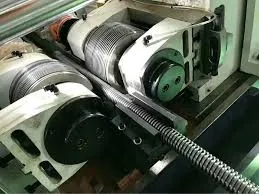
-
 Afrikaans
Afrikaans -
 Albanian
Albanian -
 Amharic
Amharic -
 Arabic
Arabic -
 Armenian
Armenian -
 Azerbaijani
Azerbaijani -
 Basque
Basque -
 Belarusian
Belarusian -
 Bengali
Bengali -
 Bosnian
Bosnian -
 Bulgarian
Bulgarian -
 Catalan
Catalan -
 Cebuano
Cebuano -
 Corsican
Corsican -
 Croatian
Croatian -
 Czech
Czech -
 Danish
Danish -
 Dutch
Dutch -
 English
English -
 Esperanto
Esperanto -
 Estonian
Estonian -
 Finnish
Finnish -
 French
French -
 Frisian
Frisian -
 Galician
Galician -
 Georgian
Georgian -
 German
German -
 Greek
Greek -
 Gujarati
Gujarati -
 Haitian Creole
Haitian Creole -
 hausa
hausa -
 hawaiian
hawaiian -
 Hebrew
Hebrew -
 Hindi
Hindi -
 Miao
Miao -
 Hungarian
Hungarian -
 Icelandic
Icelandic -
 igbo
igbo -
 Indonesian
Indonesian -
 irish
irish -
 Italian
Italian -
 Japanese
Japanese -
 Javanese
Javanese -
 Kannada
Kannada -
 kazakh
kazakh -
 Khmer
Khmer -
 Rwandese
Rwandese -
 Korean
Korean -
 Kurdish
Kurdish -
 Kyrgyz
Kyrgyz -
 Lao
Lao -
 Latin
Latin -
 Latvian
Latvian -
 Lithuanian
Lithuanian -
 Luxembourgish
Luxembourgish -
 Macedonian
Macedonian -
 Malgashi
Malgashi -
 Malay
Malay -
 Malayalam
Malayalam -
 Maltese
Maltese -
 Maori
Maori -
 Marathi
Marathi -
 Mongolian
Mongolian -
 Myanmar
Myanmar -
 Nepali
Nepali -
 Norwegian
Norwegian -
 Norwegian
Norwegian -
 Occitan
Occitan -
 Pashto
Pashto -
 Persian
Persian -
 Polish
Polish -
 Portuguese
Portuguese -
 Punjabi
Punjabi -
 Romanian
Romanian -
 Russian
Russian -
 Samoan
Samoan -
 Scottish Gaelic
Scottish Gaelic -
 Serbian
Serbian -
 Sesotho
Sesotho -
 Shona
Shona -
 Sindhi
Sindhi -
 Sinhala
Sinhala -
 Slovak
Slovak -
 Slovenian
Slovenian -
 Somali
Somali -
 Spanish
Spanish -
 Sundanese
Sundanese -
 Swahili
Swahili -
 Swedish
Swedish -
 Tagalog
Tagalog -
 Tajik
Tajik -
 Tamil
Tamil -
 Tatar
Tatar -
 Telugu
Telugu -
 Thai
Thai -
 Turkish
Turkish -
 Turkmen
Turkmen -
 Ukrainian
Ukrainian -
 Urdu
Urdu -
 Uighur
Uighur -
 Uzbek
Uzbek -
 Vietnamese
Vietnamese -
 Welsh
Welsh -
 Bantu
Bantu -
 Yiddish
Yiddish -
 Yoruba
Yoruba -
 Zulu
Zulu
Comprehensive Maintenance Solutions for Wire Thread Rolling Machinery Services
Understanding Wire Thread Rolling Machines A Vital Service for Precision Manufacturing
In today's competitive manufacturing landscape, precision is key. One of the technologies that help achieve this precision is the wire thread rolling machine. These machines are designed to produce high-quality threaded components by manipulating wire through a process known as rolling. This article delves into the workings, advantages, and the essential services related to wire thread rolling machines.
What is a Wire Thread Rolling Machine?
A wire thread rolling machine is a specialized device that transforms wire into threaded parts through deformation. Unlike traditional machining methods that cut away material, thread rolling uses immense pressure to form threads. This process enhances the strength and integrity of the final product, making it suitable for various applications, including automotive, aerospace, and construction industries.
The basic operation involves feeding a straight wire into the machine, where rotating dies apply pressure, shaping the wire into the desired thread profile. The resulting threads are much stronger compared to those produced through cutting or machining methods due to the continuous grain flow and stress distribution that rolling provides.
Advantages of Wire Thread Rolling
1. Improved Strength The rolling process compresses the metal, enhancing its mechanical properties. The threads produced are often more robust than those created through traditional methods.
2. Superior Surface Finish Wire thread rolling creates smoother surfaces with minimal burrs. This reduced surface roughness can lower the need for secondary finishing processes.
3. Higher Production Efficiency Once set up, the machines can produce large quantities of threaded components quickly. This efficiency is crucial for manufacturers aiming to meet high demand while keeping production costs low.
wire thread rolling machine service

5. Versatility Wire thread rolling machines can accommodate various wire diameters and thread types, making them suitable for a wide range of applications.
Importance of Service and Maintenance
While wire thread rolling machines offer extensive advantages, they also require regular service and maintenance to ensure optimal performance. Neglecting this aspect can lead to production inefficiencies and increased operational costs. Here are some key services that manufacturers should consider
1. Routine Inspections Regular checks can help identify potential issues before they escalate into significant problems. This proactive approach can reduce downtime and extend the machine's lifespan.
2. Calibration and Alignment Machines must be properly calibrated to maintain precision in thread formation. Regular alignment adjustments ensure that threads are rolled uniformly, which is critical for applications requiring exact specifications.
3. Die Maintenance The dies used in thread rolling experience wear and tear over time. Regularly inspecting and maintaining these components is essential for producing high-quality threads.
4. Lubrication Proper lubrication is vital to minimize friction and heat generation during the rolling process. This not only enhances performance but also reduces wear on components.
5. Training for Operators Well-trained operators are essential for the effective use of wire thread rolling machines. Continuous training not only improves safety but also ensures that operators can maximize the machine's capabilities.
Conclusion
Wire thread rolling machines play a crucial role in the precision manufacturing landscape. Their ability to produce high-strength, high-quality threaded components efficiently makes them indispensable in various industries. However, to fully leverage the advantages of these machines, manufacturers must prioritize regular service and maintenance. By investing in these critical services, companies can enhance their production capabilities, reduce waste, and ultimately achieve greater profitability in an increasingly challenging market. As technology advances, the evolution of wire thread rolling machines will undoubtedly continue, paving the way for even more efficient and sustainable manufacturing practices.
